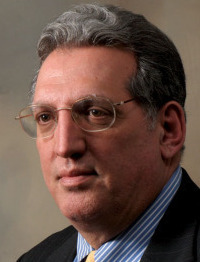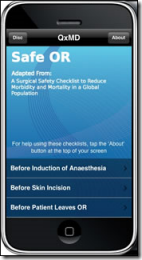An HIT Moment with … Jim Tate
An HIT Moment with ... is a quick interview with someone we find interesting. Jim Tate is president and eHealth consultant at EMR Advocate, LLC.
What’s the best way to use federal dollars to get physicians to use EMRs in ways that benefit patients?
The current Federal incentive program for e-prescribing that began January 1, 2009 is a good model to also encourage providers to document patient care in an electronic record. I would suggest that starting July 1, 2009 providers would be given a bonus (5%?) for every Medicare/Medicaid charge that was documented in a CCHIT-certified EMR. Reduce that bonus every year by 2% until it becomes a penalty (-5%).
The process would play out over five years and the requirement that the EHRs are CCHIT-certified would guarantee that interoperability would be a part of the adoption wave.
What tips can you offer physician practices for selecting and contracting for EMRs?
- Take your time.
- Designate one physician to become the EHR Champion and assume ownership of the process.
- Talk to peers and ask them which EHR systems they use and what has been their experience.
- Go online and see what other physicians are saying about the systems they are using.
- Consider only systems that are CCHIT certified.
- Narrow your list of vendors down to three or four before calling the companies for a demo.
- If you are not comfortable with your level of expertise, locate a consultant to help with the due diligence and contract negotiation.
- Make sure your expectations are clearly understood by the potential vendor.
- When you ask for a quote, make sure it is for a complete and inclusive system. I have seen physicians sign a contract and then be told three months later that if they want an interface to their in-house lab it will cost $20,000.
- If you are not really sure what should be in the contract find someone who can help you.
- Do not assume anything.
- Everything is negotiable until you sign the contract.
- If you have a timeline for your implementation, make that part of the contract.
- If you want the trainers to have at least one year of experience, make that part of the contract.
You really need to protect yourself and stay in the driver’s seat and do the things that will lead to a smoother implementation that will occur on your terms.
Assuming physicians buy systems that are CCHIT-certified and therefore theoretically interoperable, how will they actually interoperate for patient benefit?
 Interoperability can occur to benefit patients in ways that could never have been possible with paper records. The ability to generate, receive, and display CCD (Continuity of Care Document) type files is part of CCHIT’s 2008 Ambulatory criteria. This ability to generate and receive a file composed of a patient’s demographic and clinical information is a good first step to ensure that information can be shared between physicians and different EHR systems.
Interoperability can occur to benefit patients in ways that could never have been possible with paper records. The ability to generate, receive, and display CCD (Continuity of Care Document) type files is part of CCHIT’s 2008 Ambulatory criteria. This ability to generate and receive a file composed of a patient’s demographic and clinical information is a good first step to ensure that information can be shared between physicians and different EHR systems.
Another standard of CCHIT certified systems is the requirement that the EHR must be able to receive laboratory results in a discrete format directly into the patient’s electronic medical record. The provider is notified of the presence of the lab result by the system, not by the nurse. The results can be compared, graphed and then messaged to the nurse for appropriate resolution. This leads to fewer steps in the workflow, fewer lost labs and increased efficiency in the process.
Debate continues on whether today’s EMRs are good enough to be worth massive federal investment. Where do they fall short and what should vendors be doing?
It is apparent that Obama is preparing a massive federal program to accelerate the adoption of health information technology. Currently we are only at the early stages of interoperability and the subsequent ability to exchange and gather data. The capability to exchange and congregate this discrete data must be aggressively expanded to bring added clinical value. Also, the user interfaces of many EHRs are cluttered due to the high level of functionality. Design work needs to be done to make these systems easier for the users.
What technologies are available today that can help physician practices, but are less expensive and easier to implement than full-blown EMRs and practice management systems?
As a project manager for numerous EMR implementations in both the US and China, I saw the great risk of trying to immediately adopt all possible functionalities in an EHR. We called it the “Big Bang”. It was good for the vendor, usually not so good for the providers.
In many clinics, the workflow has been created over years, sometime decades. To change everything at once is incredibly stressful and can lead to the failure of the EHR being embraced by the users. To implement in a modular fashion has the benefit of reducing stress and also minimizing the loss of productivity that usually takes place with the “Big Bang”.
Messaging, e-prescribing, e-faxing and receiving discrete lab results are all good examples of “first steps” that can get the provider into the electronic arena.










The article about Pediatric Associates in CA has a nugget with a potentially outsized impact: the implication that VFC vaccines…